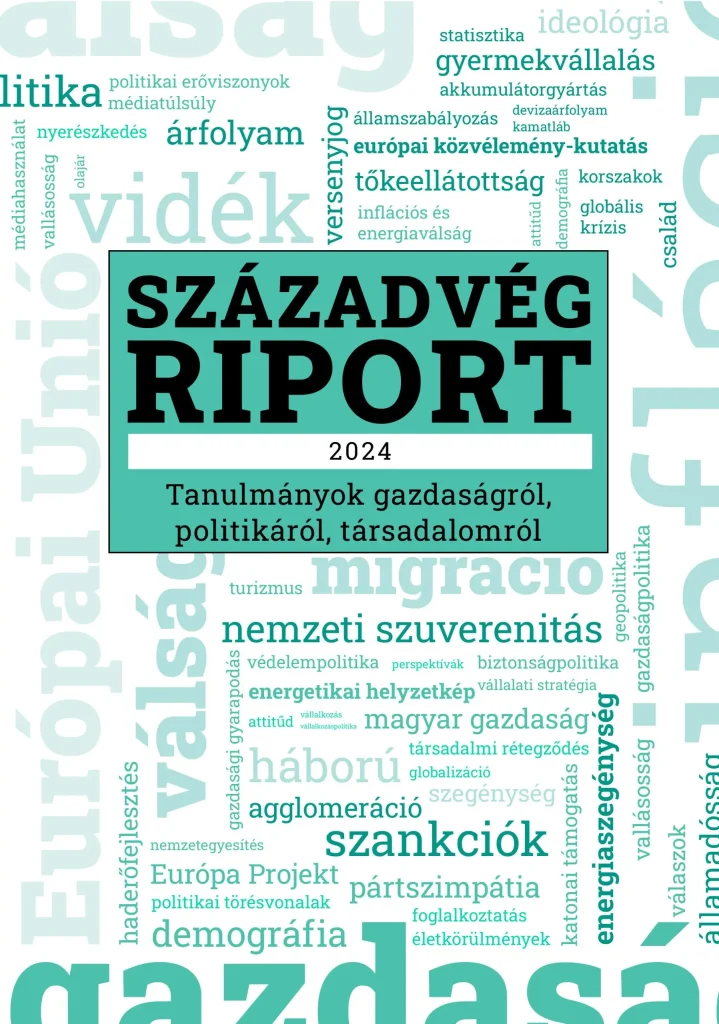The prosperity index remained in negative territory, determined by the prolonged Russia-Ukraine war and the uncertainty caused by economic sanctions. Significant improvement in economic expectations will be possible if the war ends, inflation remains in the central bank’s target range (between 2% and 4%), the interest rate environment becomes more favourable and energy markets see sustained low prices.
All sub-indices of the household prosperity index weakened compared to the previous month. Employment continued to be the most positively assessed, with a decline from 2.4 in the previous month to -0.6, i.e. it turned slightly negative. Households had a slightly less favourable assessment of inflation trends, with the indicator falling from -67.1 in June to -69.8. The perception of the economic environment weakened in July from -18.6 points in the previous month to -21.7, while that of the financial situation went from -9.0 to -11.2.
In the household survey, the biggest change to the negative, compared to June, was related to the change in perceived unemployment in Hungary over the past 12 months.
When asked “Do you think unemployment has increased or decreased in Hungary in the last 12 months?”, the proportion of respondents who said that unemployment had fallen significantly was almost the same as in the previous month (7.1% in July, down from 7.3% in June). However, only 15.4% said that it had fallen slightly, down from 21.2% last month. Meanwhile, the proportion of respondents who said that unemployment in Hungary had not changed rose by 0.7 percentage points, the proportion of those who said it had increased slightly fell by 1.8 percentage points and the proportion of those who said unemployment had increased significantly rose by 4.3 percentage points. These categories were therefore answered by 26.4%, 22.2% and 16.8% of respondents, respectively.
Looking at the sense of prosperity of households by level of education, the sharpest fall in economic sentiment was among those who had completed elementary education at most, for whom the prosperity index fell by 4.3 index points. Among those with vocational qualifications or skilled workers, the prosperity index fell by an average of 3.6 index points, and by 3.7 index points among those with secondary school qualifications. However, among those with a college or university degree, the economic sentiment indicator improved by 1.2 index points. Thus, regarding current economic sentiment, the index value of -13.6 for those with tertiary education is the most optimistic value, followed by -13.9 for those who have vocational qualifications or are skilled workers, -14.6 for those with primary education or less and -15.8 for those with secondary education.
The business survey showed a deterioration in all four sub-indices. The sharpest decline was recorded for the economic environment sub-index, down from -20.3 in the previous month to -27.6, while the production environment sub-index fell from -9.6 in June to -10.9, the industrial environment sub-index from -5.3 to -6.3 and the business environment index from -20.5 to -25.2.
The biggest negative change for companies in July 2024 was the future change in the Hungarian economy. In fact, when asked “How do you see the country’s economic situation changing in the next year?”, company managers were generally less positive about future prospects in July. Compared to the June results, 4.8 percentage points more (16.9%) said that Hungary’s economy would weaken significantly in the next 12 months. In addition, 0.5 percentage points more (24.8%) forecast a slight decline in profits. However, 0.1 percentage points fewer (26.3%) expect profits to remain unchanged. Slight improvements are expected by 5.7 percentage points less (21.9%). And 3.1% of companies expect significant improvements, down 0.1 percentage points.
The biggest positive shift for companies was seen in their ability to raise funds for development. In fact, when asked “How difficult is it for your company to raise the funds needed for development?”, more respondents on average said this month than in June that they had no difficulty. Among the companies surveyed, the answer “not at all difficult” was given by +3.5 percentage points more (21.6%), “rather not difficult” by -2.2 percentage points less (22.4%), “rather difficult” by -0.7 percentage points (27.4%), while the answer “completely difficult” was given by -0.9 percentage points less (22.7%).
Looking at the sectoral breakdown of companies, the sense of prosperity increased for one sector and decreased for four sector on average. While the average sense of prosperity increased by 1.3 index points in industry, the average decline in the economic expectations of companies was 1.5 index points in construction, 3.6 index points in services and 3.5 index points in trade in July. This month, the strongest sense of prosperity was recorded in industry (-7.5) and the weakest in trade (-18.7).
The purpose of the prosperity survey conducted by Századvég Konjunktúrakutató is to provide information to decision-makers and analysts on current and near-term economic developments. Since August 2019, our Institute has been producing the business and consumer prosperity index on a monthly basis. Our monthly survey asks 1,000 business leaders and 1,000 adult residents about their assessment of the economic situation and their expectations. For the two groups, we ask 29 and 28 questions respectively, covering a wide range of economic life. Among the responses received, positive ones (e.g. expected economic improvement) are given a positive score, while negative ones (expected decrease in employment) are given a negative score. The scores are then averaged and converted to a scale between -100 and +100 to obtain the prosperity indices. Thus, the higher the value of the prosperity indices, the more positive households’ and companies’ perception of the economy is. In addition, for both the household and the business survey, 4 sub-indices are constructed using a subset of the questions to illustrate the evolution of economic sentiment in a particular area.
